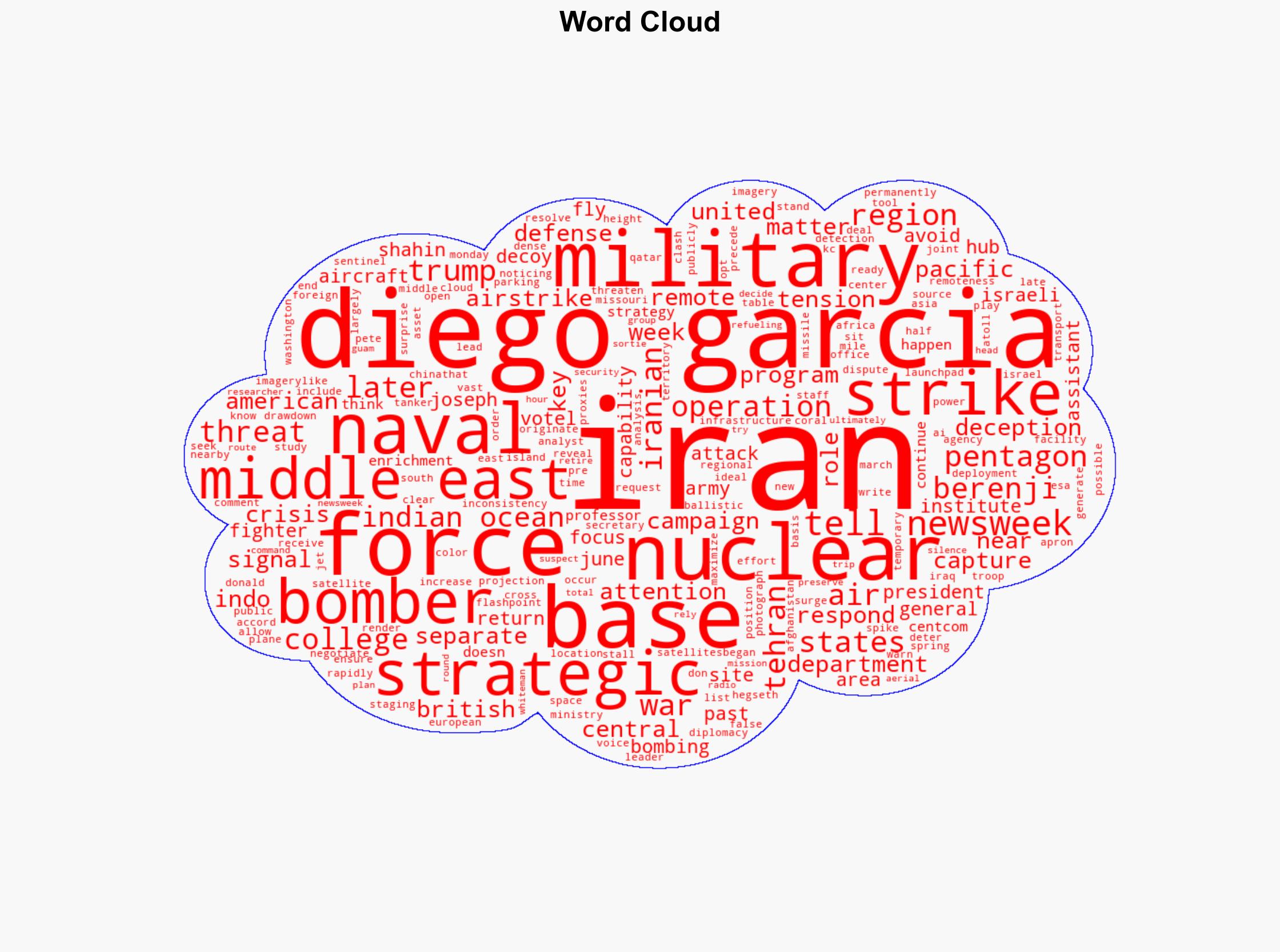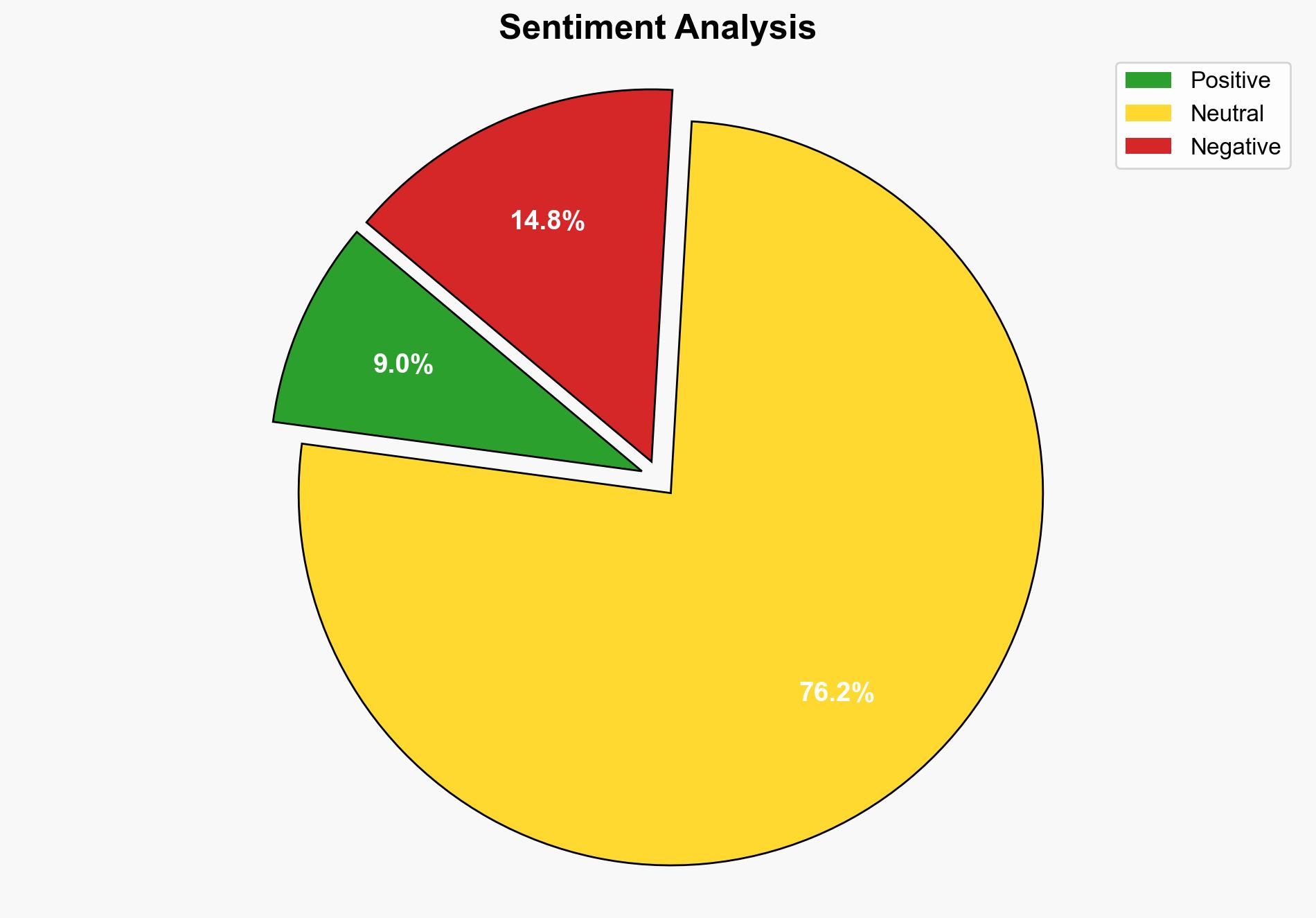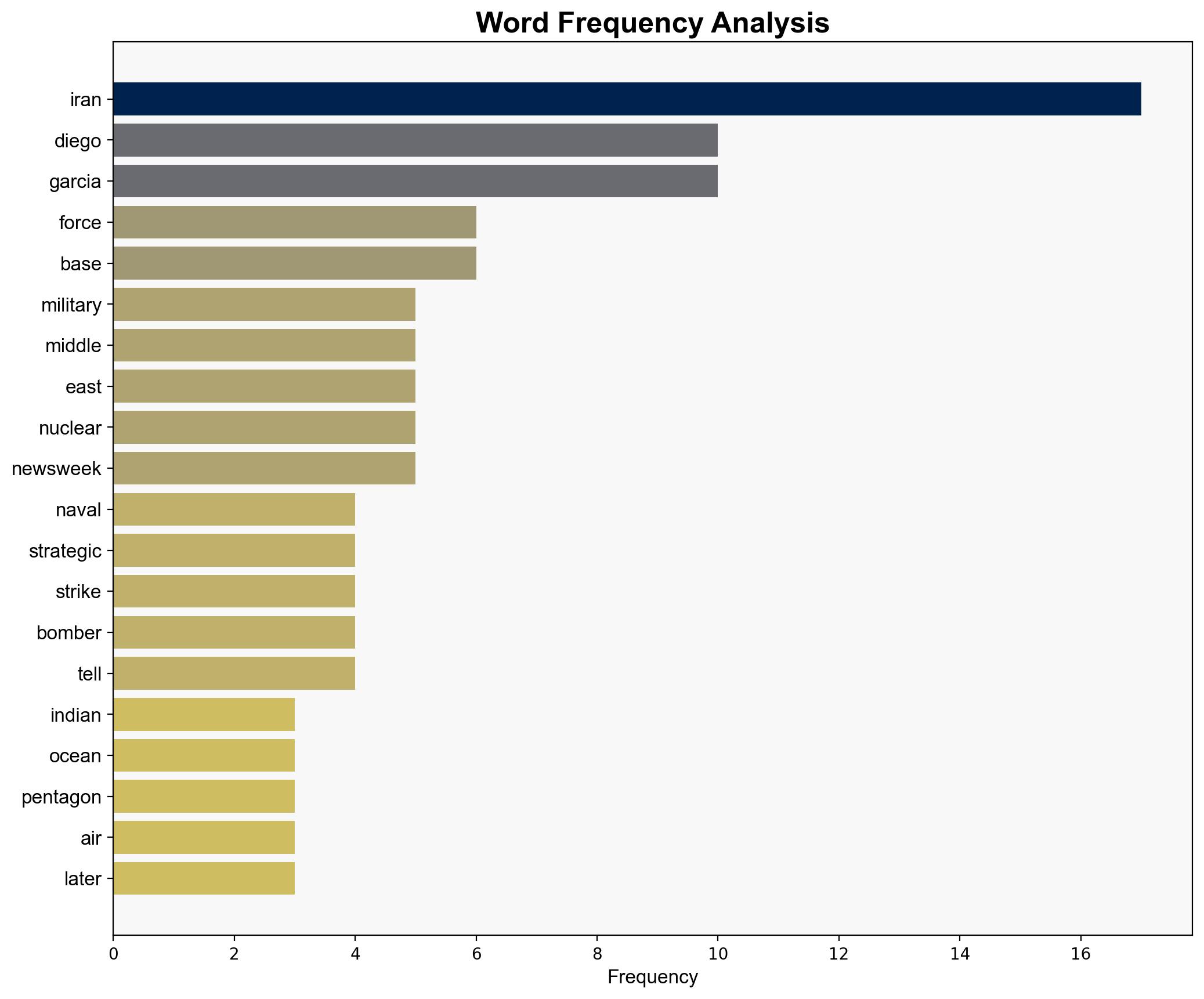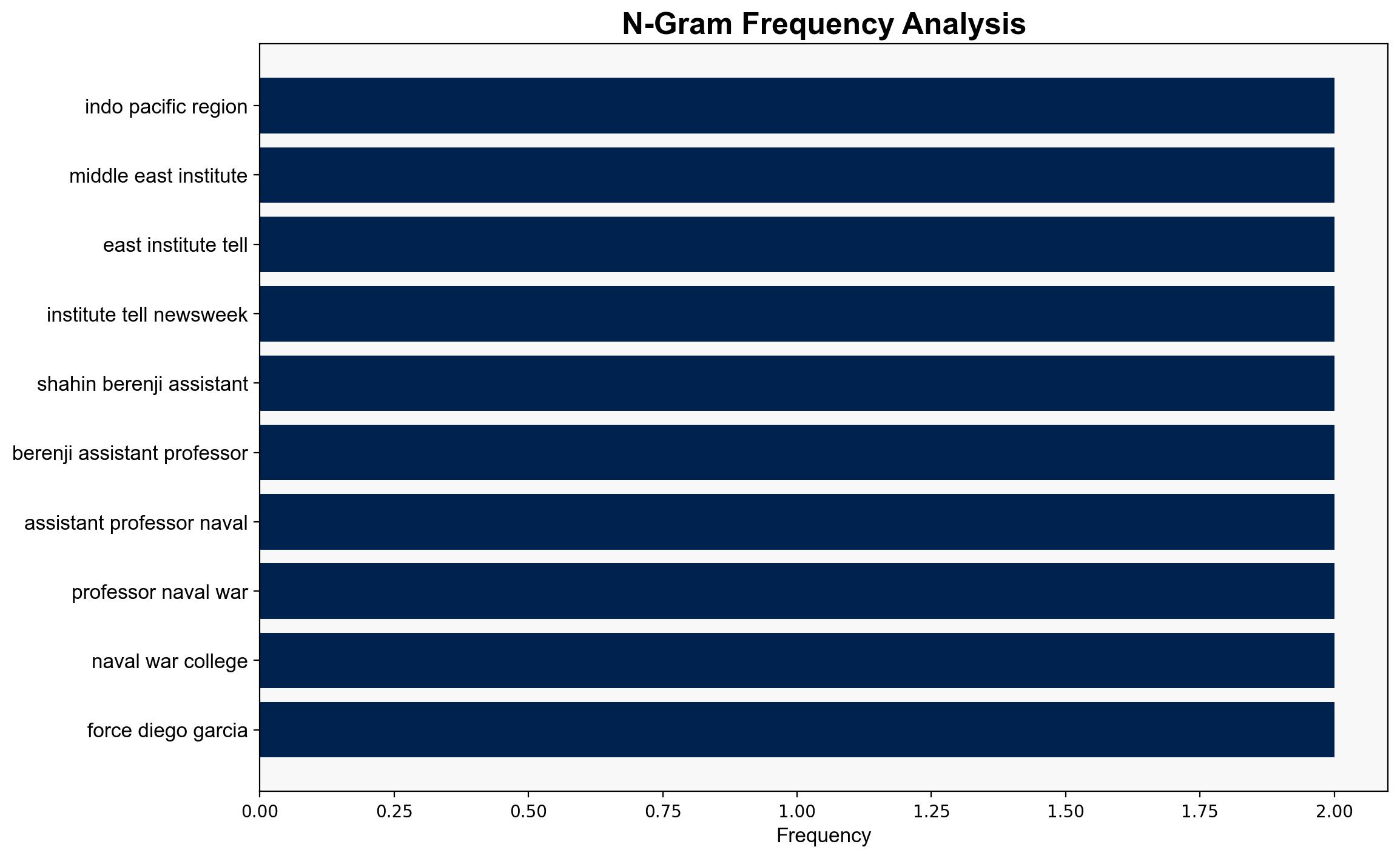How Trump Used a Remote Island Base To Warn Iran – Newsweek
Published on: 2025-08-19
Intelligence Report: How Trump Used a Remote Island Base To Warn Iran – Newsweek
1. BLUF (Bottom Line Up Front)
The most supported hypothesis is that the deployment of forces to Diego Garcia was primarily a strategic deception to deter Iran by signaling potential military action, rather than an immediate precursor to an attack. Confidence level: Moderate. Recommended action: Enhance intelligence monitoring of regional military movements and diplomatic communications to anticipate future strategic deceptions and ensure readiness.
2. Competing Hypotheses
1. **Hypothesis A**: The force buildup at Diego Garcia was a genuine preparation for a potential military strike against Iran, intended to pressure Iran into negotiations regarding its nuclear program.
2. **Hypothesis B**: The deployment was primarily a strategic deception aimed at deterring Iran by creating the perception of an imminent threat, thus avoiding actual conflict while achieving diplomatic leverage.
Using ACH 2.0, Hypothesis B is better supported due to the emphasis on deception tactics, such as aerial refueling and radio silence, and the subsequent decision not to execute a strike. The use of decoy aircraft further supports the notion of a strategic feint rather than a direct military engagement.
3. Key Assumptions and Red Flags
– **Assumptions**: The assumption that Iran would interpret the force buildup as a credible threat and adjust its behavior accordingly. The belief that strategic deception can be effectively maintained without escalation.
– **Red Flags**: Lack of direct evidence linking the buildup to a specific operational plan against Iran. Potential overreliance on deception as a strategy, which may lead to miscalculations.
– **Inconsistencies**: The discrepancy between the visible force reduction and ongoing tensions with Iran, suggesting that the threat perception may not align with actual military posture.
4. Implications and Strategic Risks
– **Geopolitical**: Continued tensions with Iran could lead to regional instability, impacting global oil markets and international relations.
– **Military**: Misinterpretation of military signals could trigger unintended escalation, particularly if Iran perceives an imminent threat.
– **Psychological**: The use of deception may undermine trust in diplomatic communications, complicating future negotiations.
5. Recommendations and Outlook
- Enhance satellite and cyber intelligence capabilities to monitor regional military activities and detect deception tactics.
- Engage in diplomatic outreach to clarify intentions and reduce the risk of misinterpretation.
- Scenario Projections:
- Best Case: Successful deterrence leads to renewed negotiations with Iran.
- Worst Case: Misinterpretation leads to military confrontation.
- Most Likely: Continued strategic posturing without direct conflict.
6. Key Individuals and Entities
– Donald Trump
– Pete Hegseth
– Joseph Votel
– Shahin Berenji
7. Thematic Tags
national security threats, strategic deception, military deterrence, regional focus





